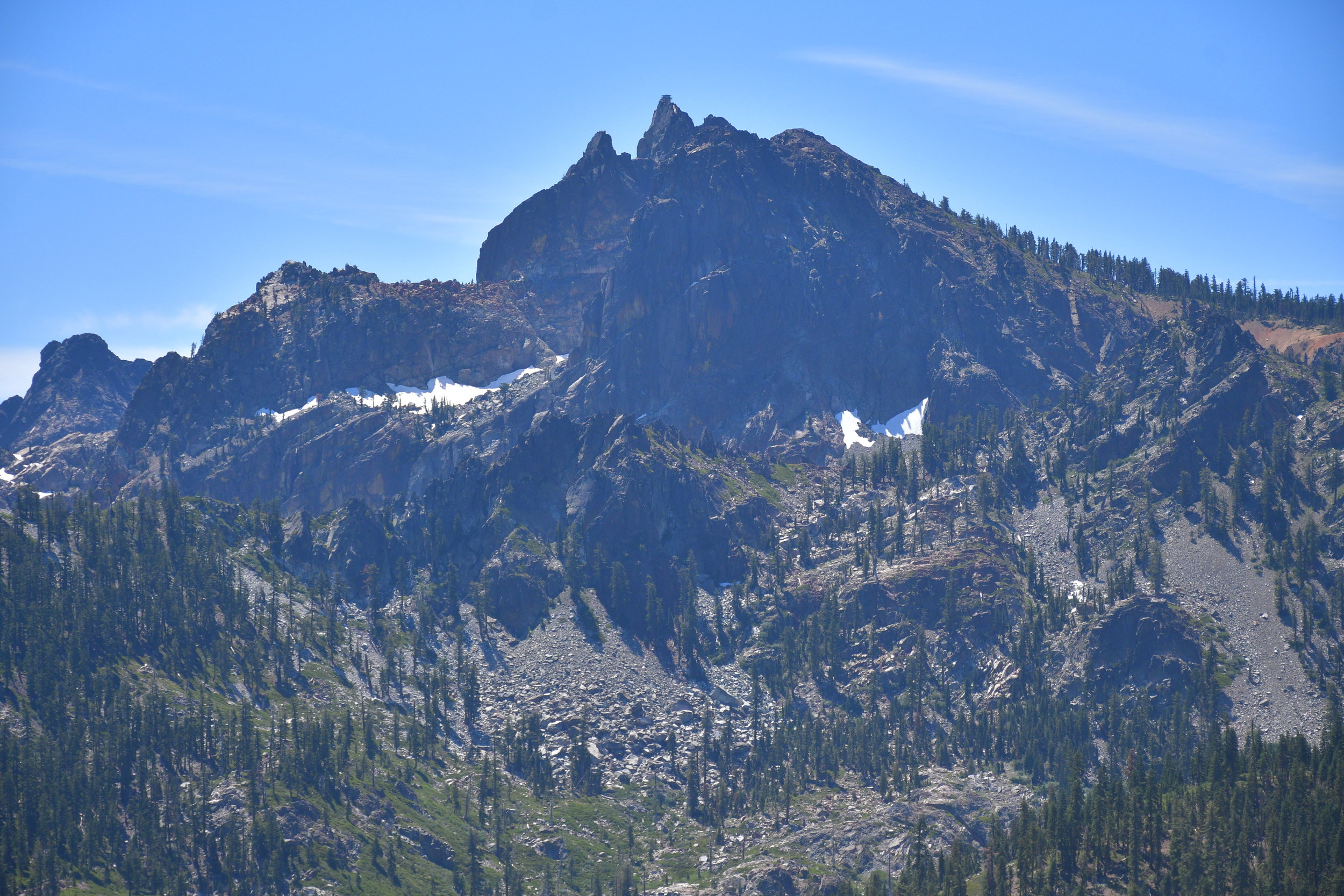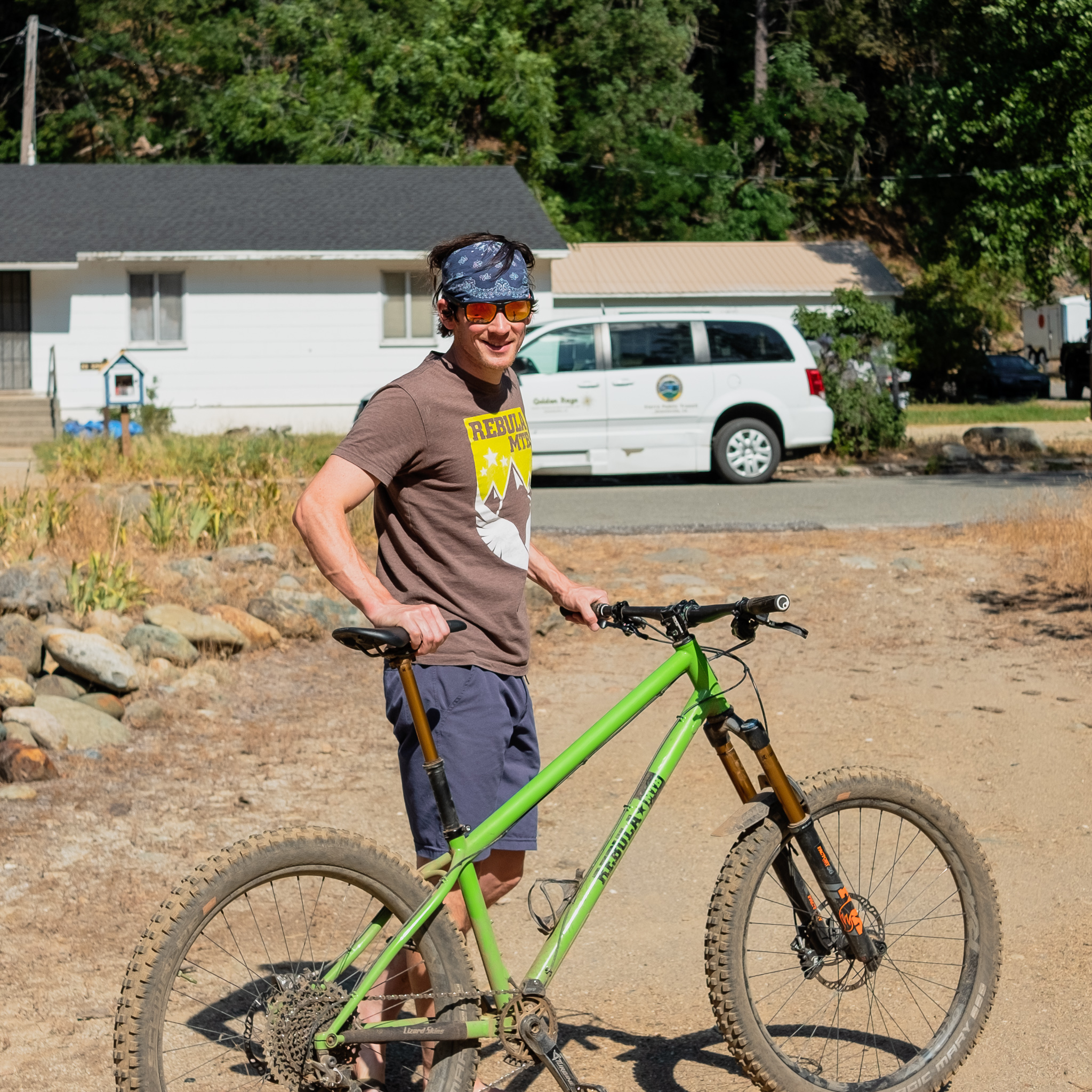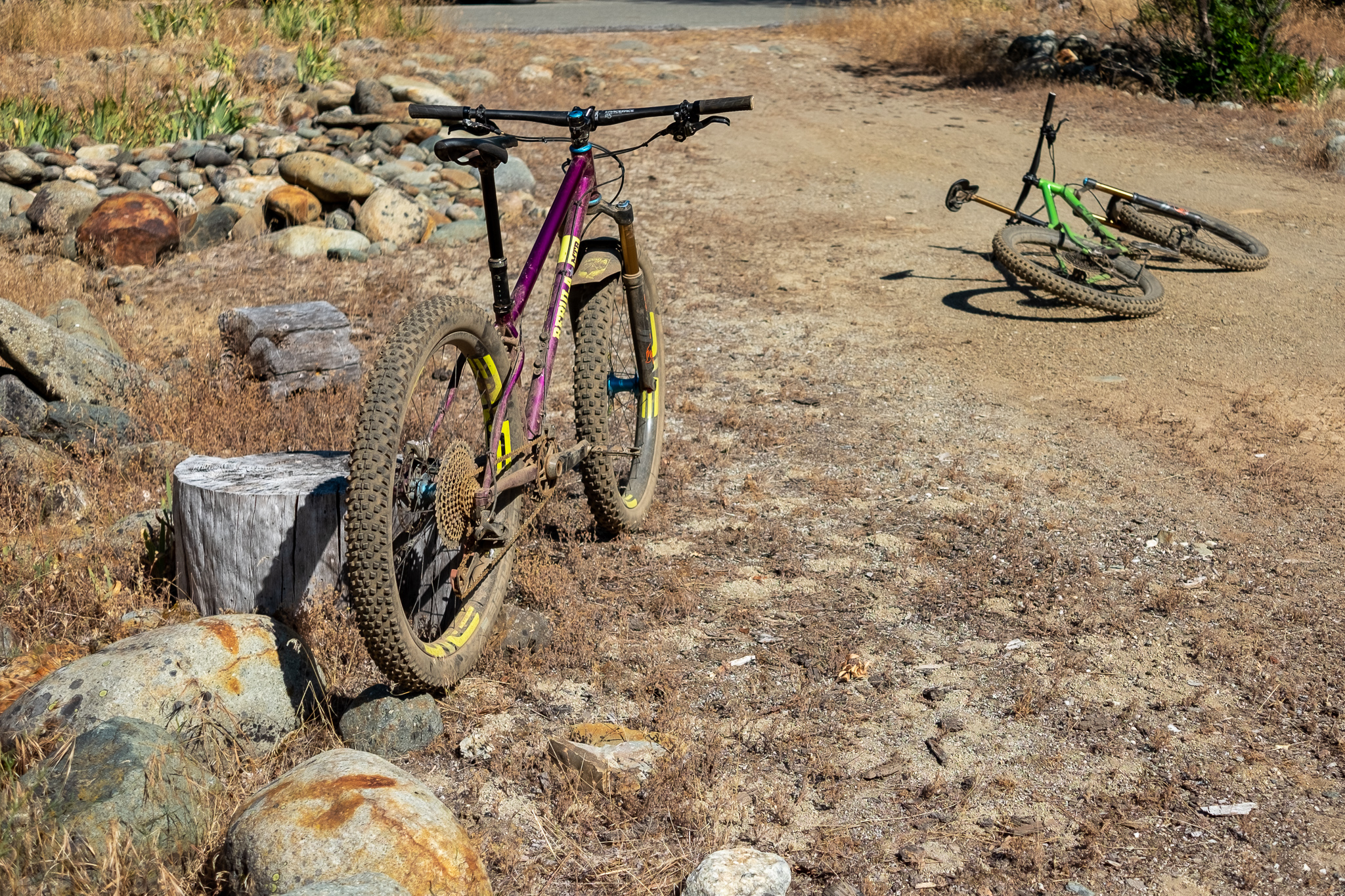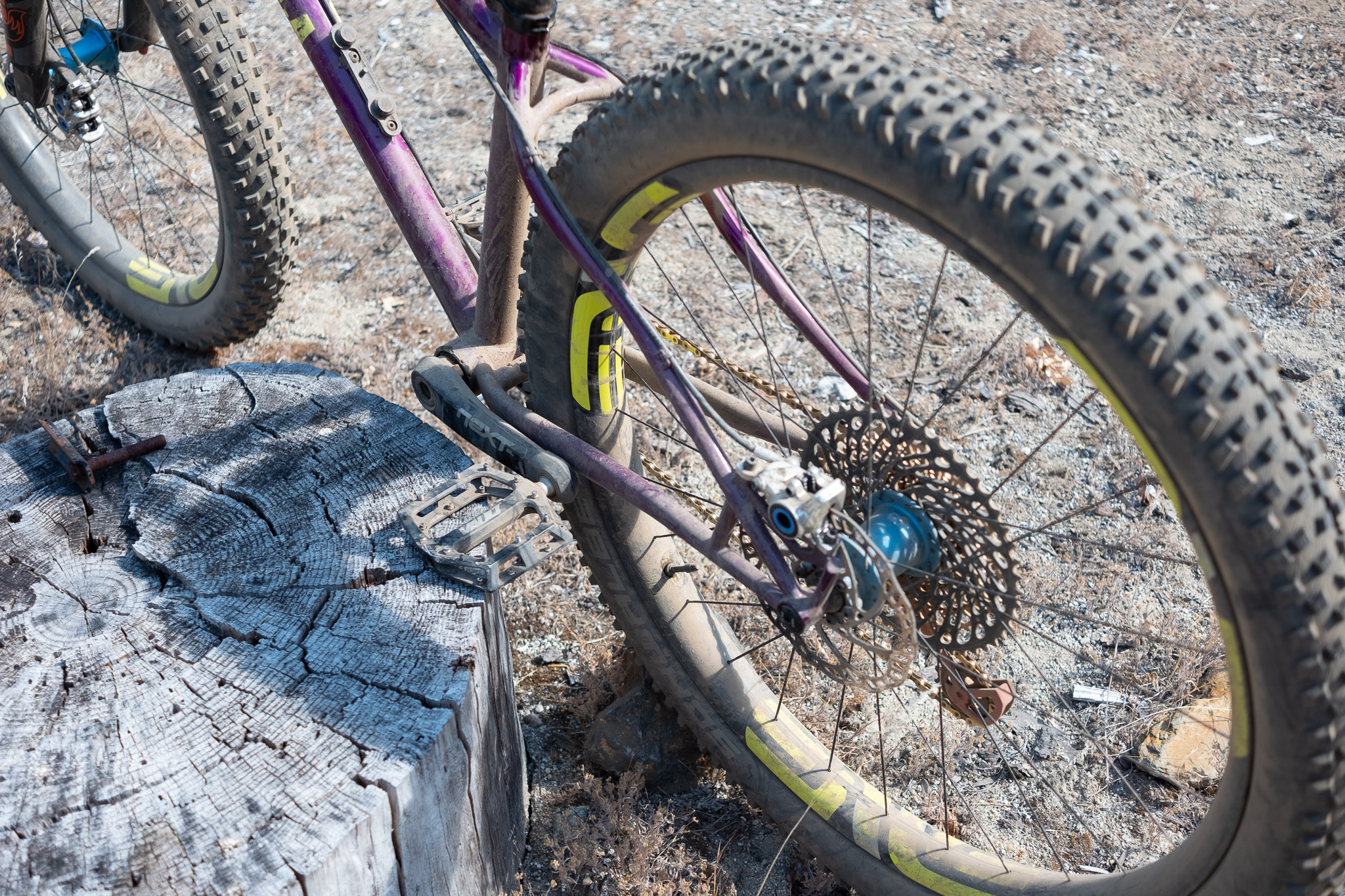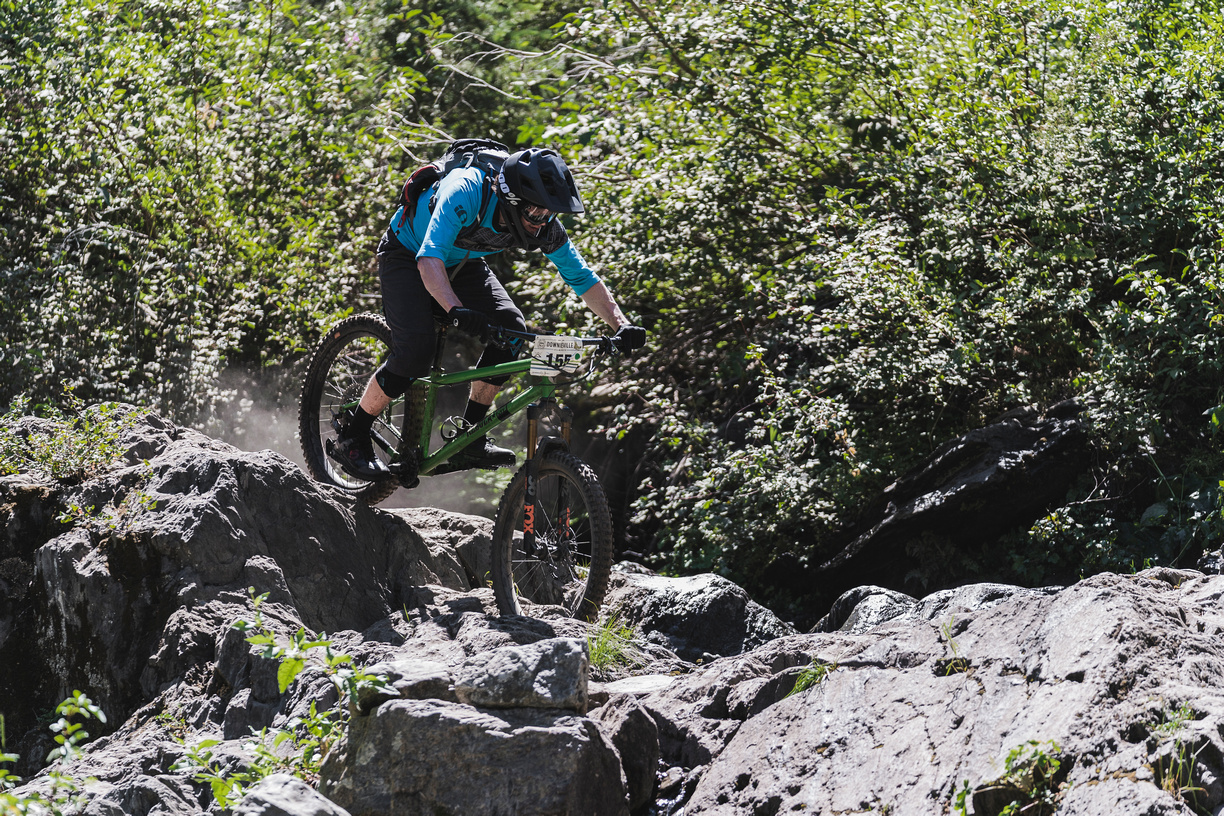Downieville: Experimental Conclusions
Extreme Experiments at The All-Mountain World Championships
Downieville
It’s the name of a gold rush town, and shorthand for a legendary American mountain bike event. Hidden up in the Sierra Nevadas at the intersection of the Downie and North Yuba rivers, it’s a locus of an incredible trail system and endless swimming holes. Since 1995, The Downieville Classic has been a long-standing celebration of riding bikes aggressively on challenging terrain. Riders from all over come to play bikes together, from world-class pros racers to enthusiastic adventure-seekers like us. The All-Mountain World Championships was a logical conclusion to our 2019 Goshawk Experiments, where our bike designs at the extreme ends of long/stable and short/nimble would be put to a big test.
The van departed from the Rebula MTB workshop before dawn on Thursday morning for an 850ish mile trip from Bellingham. We needed to make tracks in order to arrive with time for some practice runs before the main event. That night, we had the campground in Bieber all to ourselves, before rising early on Friday and wrapping up the trop We rolled into town after lunchtime and got a briefing from Jon Blackwell at Yuba Expeditions before we hopped in their shuttle us to the start of Sunday's Downhill course. Then, we camped and got ready for the big days ahead.
The Riding
Downieville’s terrain is a mix of dry Sierra dust, rocky shale, cool rock features, and minor cliff exposure that reminded us of Colorado’s Front Range where Rebula MTB was born, mixed with some rooty sections and a handful of stream crossings. This makes for a challenging mix of riding conditions: loose rock-strewn double track, wet slippery rocks and root single track, fast dusty descending with some potential consequences, and a range of pedally transitional sections connecting them.
Since 2005 Downieville has held a unique event, The All-Mountain World Championships: two back to back days, XC and DH, with the same bike setup. Saturday is the Downieville Classic Cross Country (XC) course, a 29-mile route that begins with an 8 mile climb up 3,000 feet from Sierra City to the crest of the Sierra Nevada, then down 5,200 vertical feet to downtown Downieville. Sunday is the Downieville Downhill (DH), dropping 5,000 feet from Packer Saddle to Downieville in a mere 15 miles, it’s reputed to be the longest and most demanding downhill mountain bike race in the nation.
Climbing
Saturday’s XC race started with the climb, and when things pointed upward it was about 90°F. Scaling the side of the mountain left nowhere to hide from the blazing late-morning sun. It was endless exposure, crunchy rock, steepness, and compounded the heat. After the second aid station, along the crest of the ridge, the trail gave way to a rolling single track climb with with rugged rocky puzzles sprinkled in.
Descending
Both days had big descending sections following similar routes, though the differences between the two made them challenging in different ways.
Day 1: XC. Once the climb was over, the first descent breaks into the infamous “Baby Heads” section with rough lines and few chances to brake and dump speed, then into high speed descents broken by sharp climbs or rocky technical pedal zones.
Day 2: DH. Out of the gate it’s a hard pedal before things point downhill and then speed speed speed, with a some major features like The Waterfall. It’s super fast, then joins up with the bottom half of the XC course which is still a ripper.
The Test
The duration, conditions of heat and exposure, and brutality of the technical challenges in descending surfaced the places where opposite ends of the rider input spectrum can become taxing.
Hardtailing is a very active riding experience: your body is your suspension. The legs, lower back, and core are working to keep you supple and fully, constantly engaged. If you “lock up” and your body stiffens, you lose the ability to work with the terrain and end up braking in the wrong places and hanging up on obstacles while fighting your good friend, momentum.
Good trail vision was key, and trail knowledge was essential. The practice runs on Friday were absolutely critical, enabling us to have some markers to set up lines before a course change, big corner, or technical feature. The nature of these trails means the more time a rider spends on them, the better prepared they are to ratchet up the speed.
Goshawk 160 // Chris
Did we mention yet that Downieville has a lot of high-speed descending? The “extreme stability” of the Goshawk 160 design (long reach and wheelbase, 64 degree head angle, etc) , coupled with plus-size 2.8” Magic Mary tires, and a healthy dose of confidence meant that Chris was trusting his skillset and bike to take some fun aggressive lines through some entertaining terrain, occasionally at high speed.
Goshawk 160 Details
64° head tube angle @ 17% sag
77° seat tube angle
500mm reach
160mm Fox 36 fork w/ 44mm offset
435mm chainstay, 12mm x 157mm rear spacing
27.5” x 2.8” Schwalbe Magic Mary tires
T47 x 107mm Bottom Bracket w/ ISCG Guide
“The terrain around Downieville is amazingly beautiful and the trails offer a lot of fun challenges. Certainly the biggest challenge for me was the XC climb combined with the heat (90+ Degrees), it really threw me for a loop that I think I am still recovering from. From a bike perspective, the the climb and my absolute exhaustion eventually made the tradeoffs of the long and slack front end very clear, it takes more effort to track straight when climbing on “The green monster”, which is not a problem when you are fresh, but gets much harder when you are pushing your limit. As the climb wore on my lines definitely go sloppier and that probably just added to my fatigue level, which then made my lines sloppier still. A little more training may have been a good idea!”
“The DH day was a ton of fun! The descent is really diverse, with some great wood sections with nice corners, some cool rock puzzles with lots of line options, some really high speed zones, a little cliff exposure, and a good bit of pedalling and climbing. There are a pile of sections where traill knowledge went a long way, and it was great that we got a practice day in to test out some line options and try to remember some landmarks. Once I entered (I remembered all but one of my landmarks) the technical sections where line choice really mattered I felt in total control and was free to work with the terrain and just have fun. Big brake rotors, Magura four piston calipers, and those magical Magic Mary tires made scrubbing speed at the right times (so I could roll the following section completely off the brakes) easy, as always braking at the right times was key to being fresh, active, and in control at the right times.”
“Then to finish each day off with a dip in the infinite number of pools in the perfectly cool Yuba River really makes Downieville a special place to ride a mountain bike and properly relax once the day is done.”
Goshawk 120SR // Colin
A quick primer on our “short reach” bike design (the “SR”): the reach is short, but the head tube angle is not steep. At 67 degrees, the Goshawk 120SR on the slacker end of what would be “ultra modern XC bike geometry” which adds stability; this creates some confidence on terrain a steeper bike might stumble through. Basing the rider cockpit around a “long” 70 mm stem puts the rider in the position to make quick directional changes without big body movements - it’s incredibly agile without a “twitchy” feeling.
Goshawk 120SR Details
67° head angle @ 17% sag
75° seat tube angle
420mm reach
120mm Fox 34SC fork w/ 51mm offset
430mm chain stays, 12mm x 148mm rear spacing
27.5” x 2.8” Schwalbe Robby Nic (F) / Rocket Ron (R) tires
T47 BB92 w/ ISCG Guide
“Ascending on a short-reach plus-tire hardtail is just awesome. With gobs of grip and no wandering front end, the only limit is your legs and your engine. No shame, I took breaks to rest where I cold find scraps of shade and took in the stunning views on that climb, but mostly was able to ride where other people around me were off the bike pushing.”
“What we love about the “short reach” bike design is it is a very direct feel - the nimble ride comes from its ability to change direction rapidly, but the tradeoff is that it requires a lot of mental work of reading lines coupled with rider input to keep it conforming to those lines. If you shoot into rocky features, you can’t just hang on and let it run, you have to be deliberate about your approach, lay off the brakes, and give it some steering input. This meant that on the notorious ‘Baby Heads’ descent where there’s nowhere to slow down, it really drained my “suspension” in the back and legs to stay in control, and then in the lower, faster sections the hands started to succumb to arm pump. When the terrain gets stepper and rougher I have to consciously put more weight toward the back of the bike and as fatigue set in I found myself slower to make those adjustments.”
“Overall, riding a super nimble bike is playful fun on the Downieville course, and shines on places like the singletrack section of the first big climb, the quick leaps and hops over rocky sections of the descent, and tight fast corners.”
Conclusions
Astride a great bike, a skilled rider can play on any conditions; it takes some adaptation, preparation, and confidence. In comparing the long/stable versus short/nimble mountain bike designs we see that one direction is not “better,” it’s really just a set of tradeoffs in riding experience adjusted for by the rider. Rider style is the real decider - do you prefer to point it down and rip, or quickly dart through the maze?
For a clear illustration, here’s a side-by-side comparison of Chris and Colin each tackling the Waterfall feature on the downhill course.
The Center Line
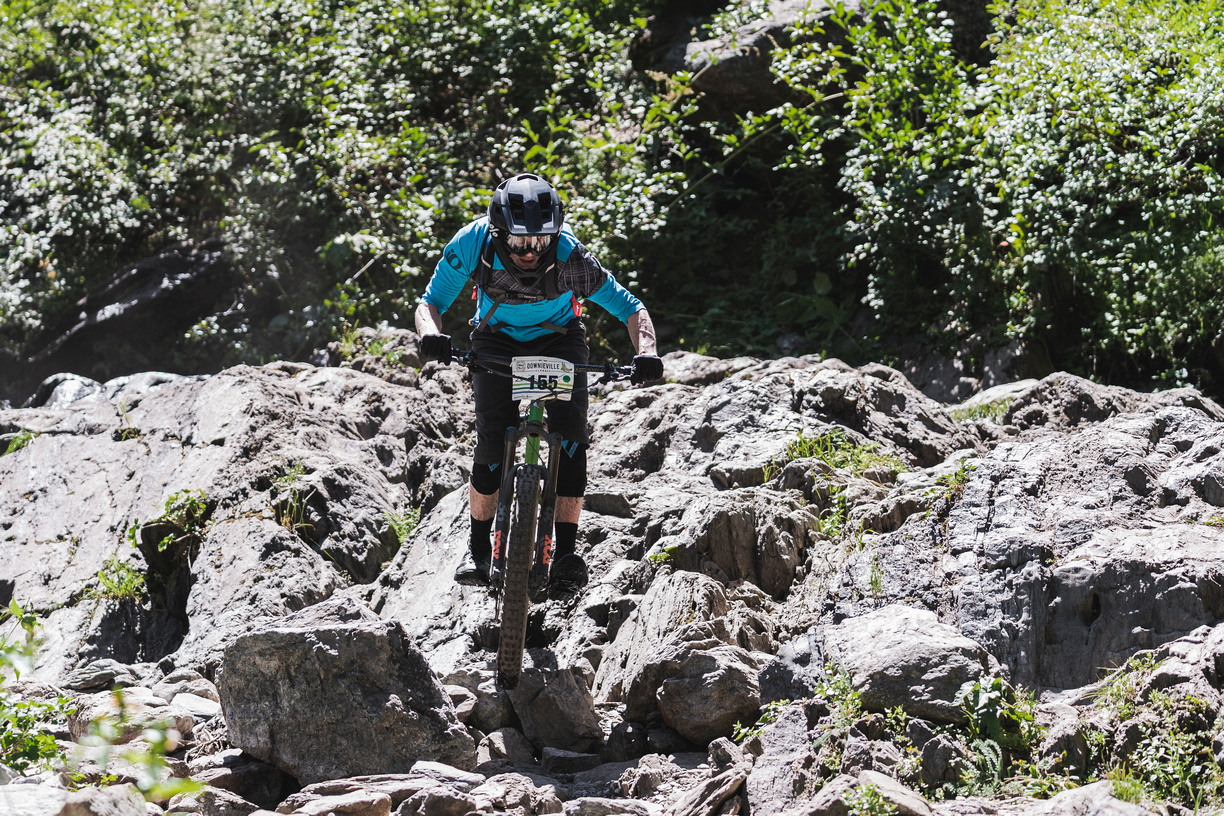
The more stable bike coupled with his speed and confidence means Chris can have a faster, rockier, exit path. He enters and takes a straight line over bigger, chunkier gaps in the rock, to exit straight out.
Across and Right

The less gnarly line with smaller lumps sends Colin into a gulley on the far side of the feature, where his agile bike can make a quick turn and send him out into a gravel patch where he can put some power down.
Look Ahead
New design insights for our customers
We designed the Goshawk 160 & 120SR to explore the boundaries of long/stable and short/nimble experimental bikes, and it will add to our rich expertise in creating custom bikes tailored to each rider’s style, goals, and home terrain. Order yours.
Keep an eye out for Downieville 2020
The Downieville Classic is notorious for filling up in the blink of an eye. Though it’s a year out, It’s going to be the 25th anniversary, and that means spots are going to be gone in a heartbeat. Keep an eye on the Events page for Sierra Buttes Trail Stewardship and make sure to sign up for their email updates (at the bottom right of the page).
New experiments ahead
Our team is already working a project to rebuild a Goshawk into a mixed-wheel bike and compare to our Forest Falcon, prototypes for an all-new bike that will be available in stock-sizes, and new soft-goods to enhance your ride. If you want to be the first to know, our email updates are the best way.


